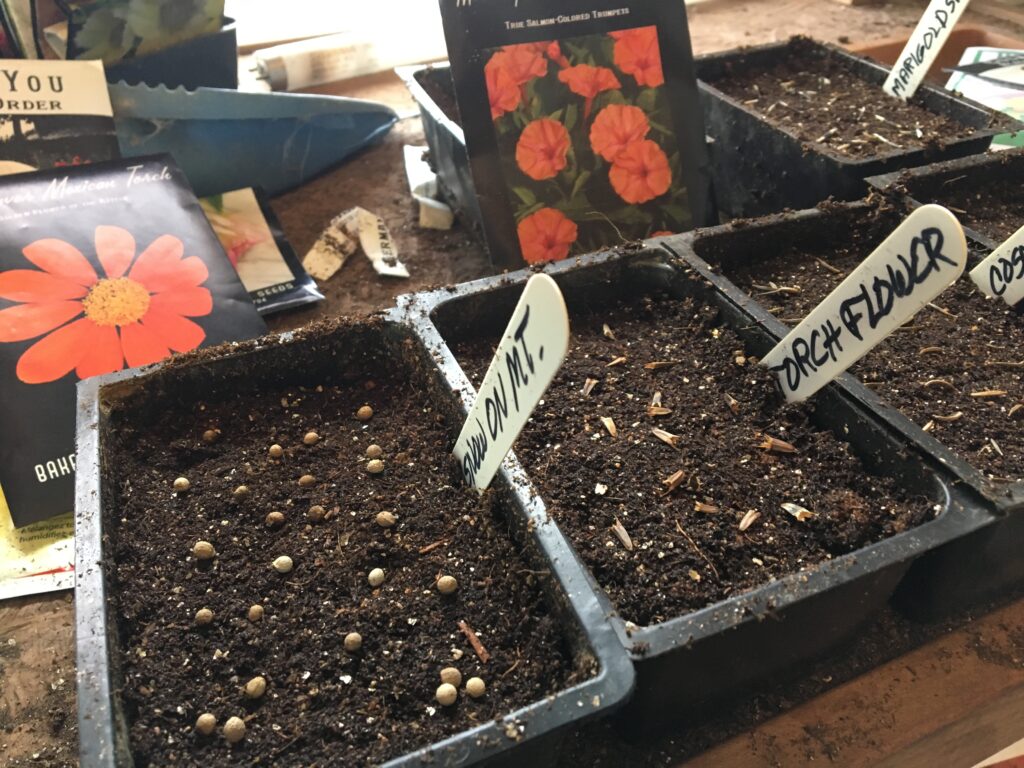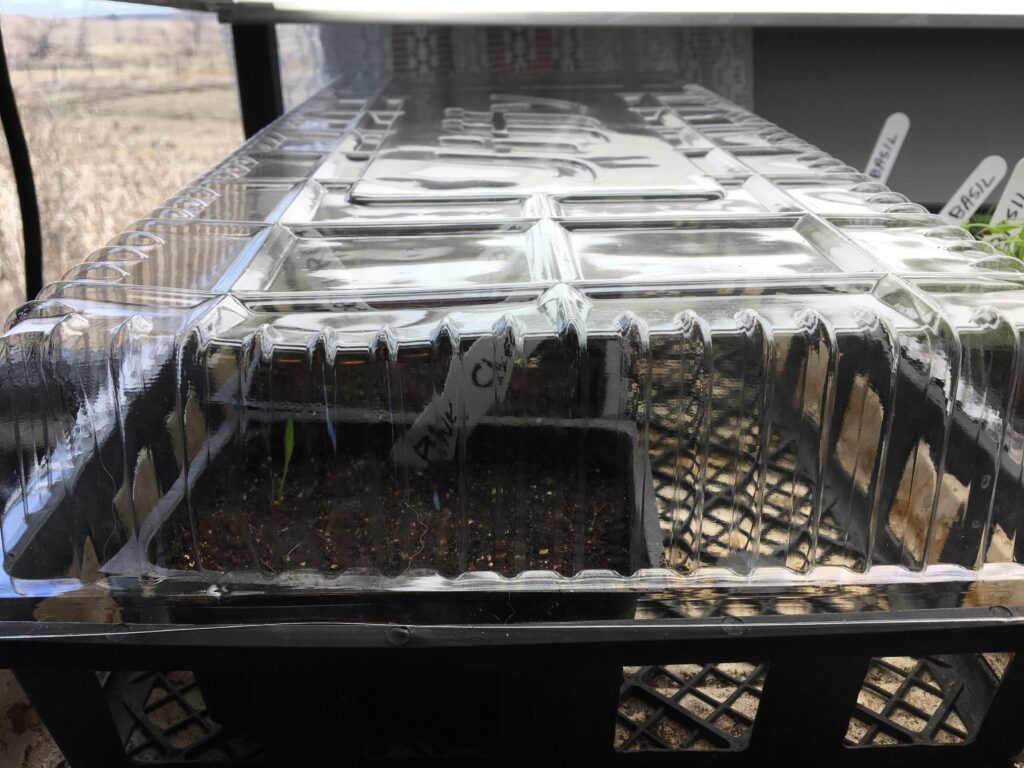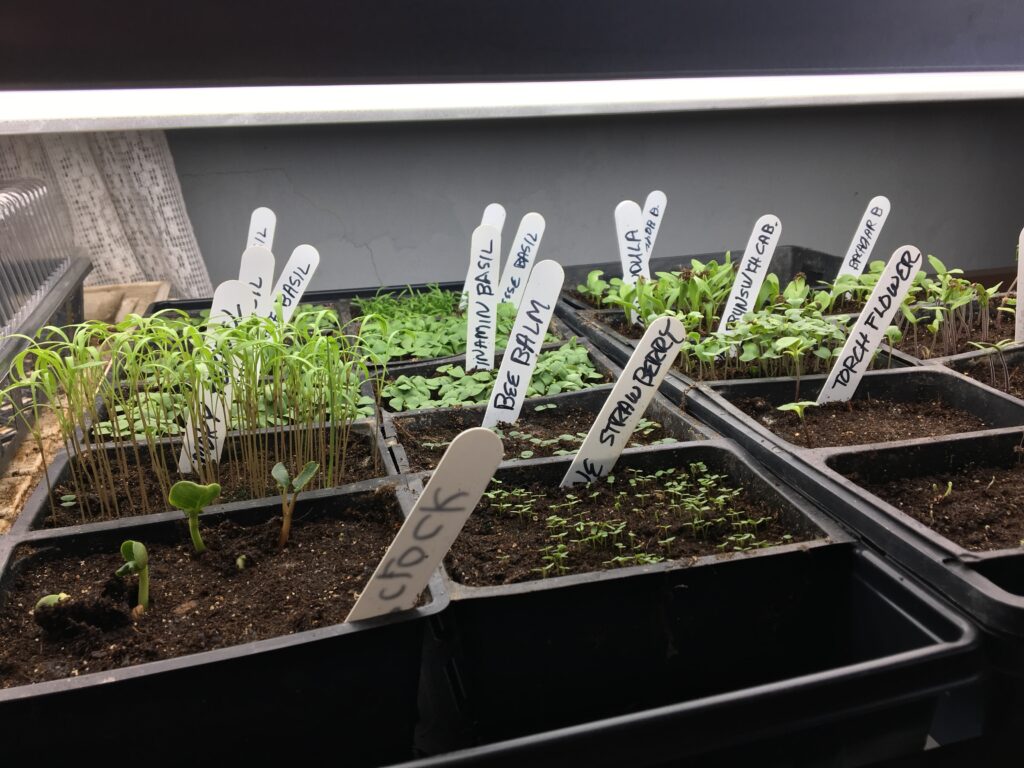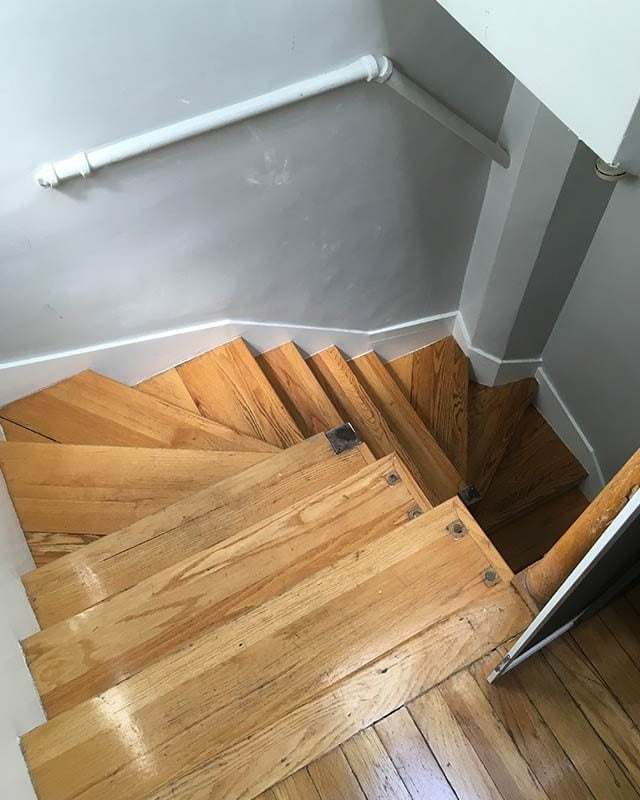Starting seeds indoors is a great way to get a head start on the growing season. With a simple setup and a little care, you can grow strong, healthy plants before moving them outside.
First, choose your containers. I use plastic seed trays. Some use old baking pans, clay pots, or such. Just make sure they have drainage holes. Fill them with a light, well-draining seed-starting mix, which helps seeds germinate easily.

Next, plant your seeds according to the instructions on the packet. A general rule is to plant them about twice as deep as their size. After planting, gently water the soil with water to keep it moist but not overly wet. I place the trays in water and let them soak up from the bottom, so I do not disturb the seeds by watering over the top of the seeds.

To maintain humidity, cover the containers with plastic wrap or a humidity dome until the seeds sprout. Most seeds need warmth to germinate, so keeping them in a warm spot (65-75°F) or using a heat mat can speed up the process.

Once the seeds sprout, remove the cover and place the seedlings in bright light. A sunny south-facing window works, but if you don’t get enough natural light, use grow lights for 12-16 hours a day. Keep the lights close to the seedlings (about 2-4 inches above) to prevent leggy growth.
Water your seedlings carefully, keeping the soil evenly moist but not soggy. As they grow, you may need to thin them out, snipping weaker ones so the strongest plants have room to thrive or transplant them into another container after they get their true (adult) leaves.
For vine crops, I sow a few seeds into a 4 inch peat pot and plant the entire pot into the garden.







